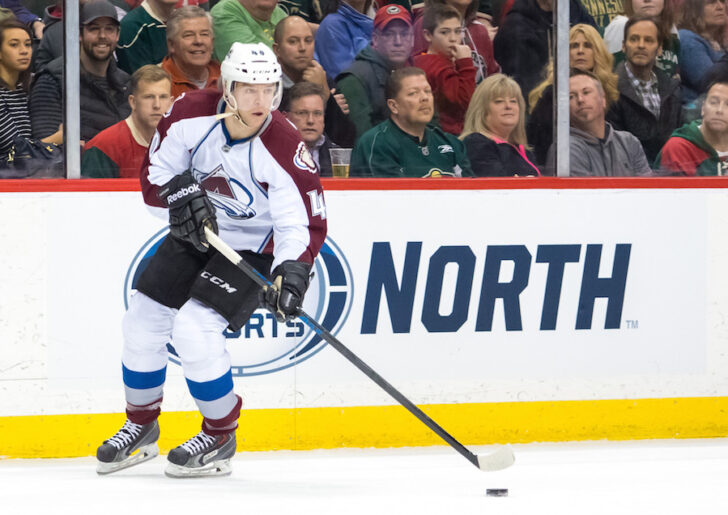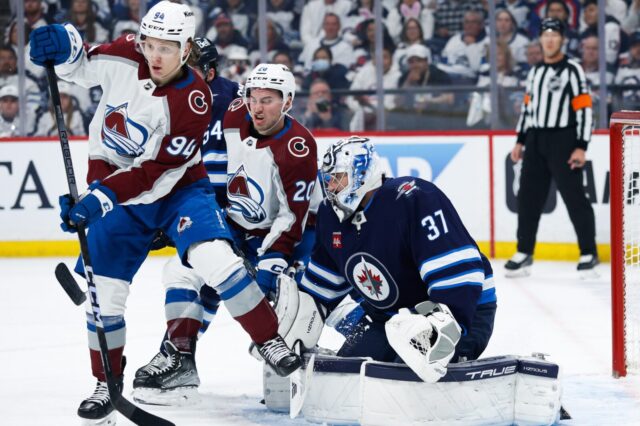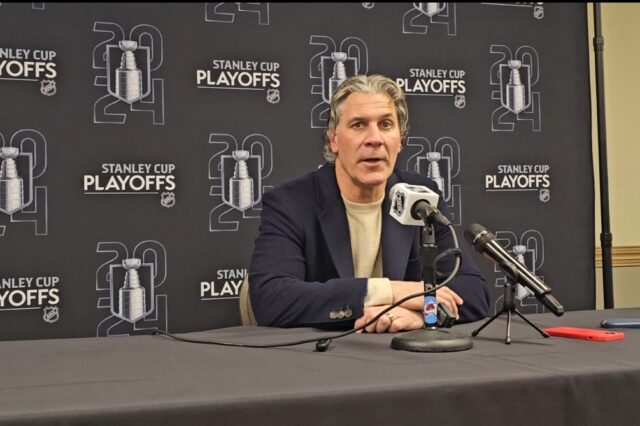Not much has gone right for the Colorado Avalanche this season. Patrick Roy’s squad has experienced ugly loss after ugly loss. And the problems aren’t few and far between; there are plenty of problems with Colorado’s play.
Goaltending has been a problem.
Scoring has been a problem.
Defense has been a problem.
There is good news though; those are all things that can be fixed as the season progresses. Although, one might debate whether or not the Avalanche is addressing these issues with any urgency (or even if they’ve recognized that there are multiple problems).
But there is one huge problem for this franchise that can’t be addressed this season.
The Colorado Avalanche is heading the wrong way in the age department. Those young, upstart Avs are no longer young. The Colorado Avalanche is the third-oldest team in the NHL. That is bewildering, and exactly the opposite of what you want from a team still trying to build a winner.
The only two teams with older rosters are the Florida Panthers and the Philadelphia Flyers. Not the best company.
Age may not be the biggest culprit when it comes to the struggles of the Avalanche. The litany of issues outlined above each weigh equally at this juncture. That said; it’s hard to ignore the correlation between the rise in average age over the last two years and the decline in play.
Anyone watching the Denver Broncos can tell you about the declining abilities of an aging athlete.
So what happened? How have the Avalanche gone from being one of the youngest teams in the NHL to one of the oldest?
The answer is two-fold.
First and foremost, as the executive vice president of hockey operations, Joe Sakic has chosen to let young players in the prime of their careers walk and has replaced them with aging veterans.
You can agree or disagree with Sakic’s unwillingness to pony up the dough for Paul Stastny and Ryan O’Reilly, 29 and 24 respectively. But you can’t argue that Sakic found suitable replacements.
After refusing to match the offer of a division rival for Stastny’s services, Colorado’s EVP signed Jarome Iginla and Alex Tanguay to replace his production. Both guys have much more of their careers behind them than in front of them.
Sakic took the same approach when trying to replace O’Reilly; he signed a player six years older. At 30, Carl Soderberg is no old goat, but he also isn’t as talented as ROR, nor is he going to become so as he enters his thirties.
Second, this franchise has completely failed to draft and develop defensemen. This has forced the team rely on veterans with worn tread on the tires. Brad Stuart was once a very solid NHL defenseman, but he has undoubtedly lost a step (or two). Francois Beauchemin has been a great addition, but at 35 he isn’t a long-term solution.
When (if ever) are defensive prospects like Duncan Siemens, Chris Bigras and Kyle Wood going to be ready? Or, the better question might be why aren’t they ready? Wood, a third-round pick, may be more of a long-term project, but Colorado invested high picks in Siemens and Bigras; neither has sniffed the final 23.
These are bad trends and unsustainable. Sakic can’t continue to plug holes with aging veterans because young talent has bailed for greener pastures or hasn’t been developed properly.
Veterans have a place on every roster, but bad things are going to happen when you’re trying to make them the focal point of your team.
If Roy can’t find solutions to Colorado’s problems on the ice it’ll be time to bring up the kids. Colorado needs to determine what they have in the way of young prospects. Because continuing to get older and older hasn’t proven to be the key to success.



